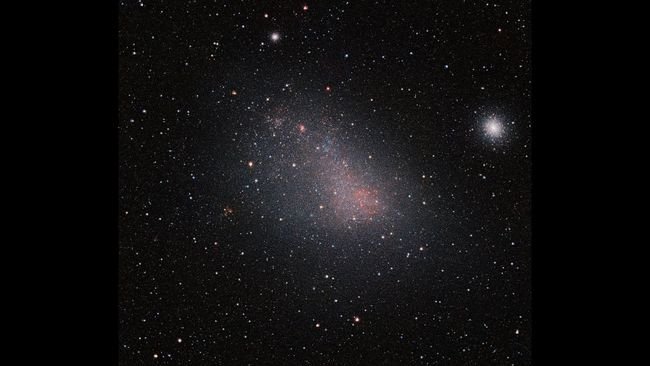New observations of the Small Magellanic Cloud show that it may actually be two galaxies “disguised” as one
New research shows that one of the closest galaxies to the Milky Way hides a second galaxy behind it. Observations of the Small Magellanic Cloud indicate that it may actually be two galaxies.
Small Magellanic Cloud — a nearby galaxy with which astronomers are very familiar — or so they thought. New research suggests that the Milky Way's satellite galaxy, some 199,000 light-years from Earth, is hiding a secret: it's actually two galaxies, one after the other.
To make this discovery, a team led by astronomer Claire Murray studied the movement of gas clouds and the young stars that form within them in the Small Magellanic Cloud. They discovered that the small galaxy, which is about 18,900 light-years wide (less than a fifth the width of the Milky Way), contains two different “stellar nurseries” thousands of light-years apart.
The Small Magellanic Cloud, like the Large Magellanic Cloud, are dwarf galaxies. They are gravitationally bound to the Milky Way and should eventually merge with our galaxy. However, the shape of the Small Magellanic Cloud is different from the symmetrical shape of the Large Magellanic Cloud, and the mass is only a third that of its larger neighbor (which is equivalent to 7 billion solar masses). Although it had previously been suggested that the Small Magellanic Cloud was composed of several components, the fact that it was largely obscured by interstellar clouds of gas and dust made them difficult to distinguish. During the study, the team of astronomers examined radio waves emitted by hydrogen in the dwarf galaxy using the Australian Square Kilometer Array Pathfinder radio telescope, consisting of 36 dish antennas. The team also used data from the Gaia spacecraft, which is creating a 3D map of stars in the Milky Way, to track the speed and direction of thousands of stars in the Small Magellanic Cloud that are younger than 10 million years old.
Working with the assumption that these young stars are moving along with the large clouds of gas in which they were born, the researchers noticed two regions of star formation from gas and dust. Each of these areas has a different concentration of «metals», — elements heavier than hydrogen or helium, — and one cloud appears further from Earth than the other, although the exact distance between them is not yet known.
One of the main mysteries that scientists plan to solve is whether these two galaxies are connected by gravity, or whether one of them formed separately as a result of gravitational interaction with the Large Magellanic Cloud.
One argument in favor of the first explanation is that both clouds appear to have about the same mass, and if one were separated from the other, then the daughter cloud should be smaller. If the two clouds are not connected to each other, then this would mean that the Small Magellanic Cloud — two independent objects. In this case, the Small Magellanic Cloud may need to be renamed to reflect its binary nature. Many scientists already support this idea: the Small Magellanic Cloud was named after Ferdinand Magellan, a 15th-16th century explorer who discovered neither the Large Magellanic Cloud nor the Small Magellanic Cloud and was responsible for the death and enslavement of thousands of indigenous people during his voyage around the world.

